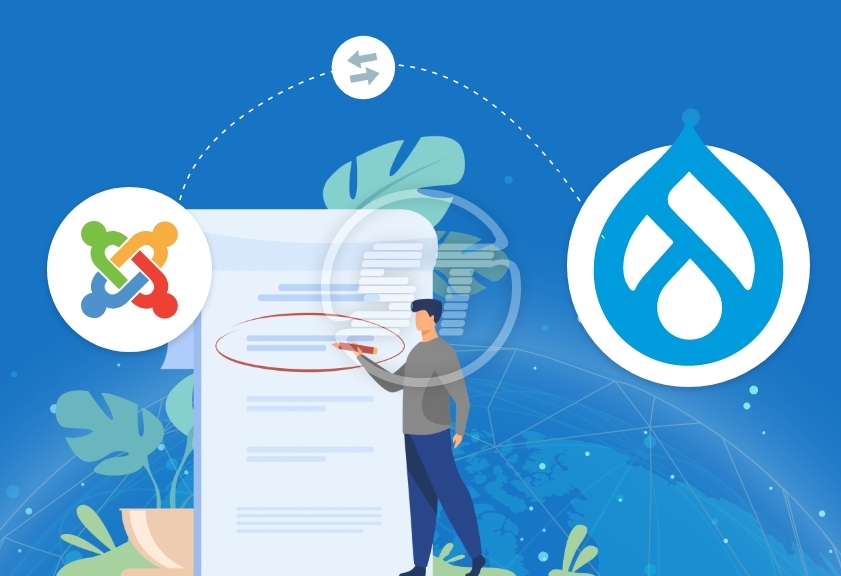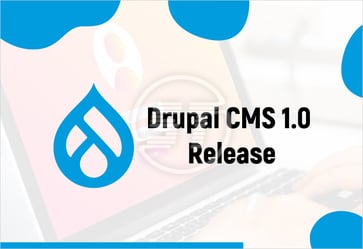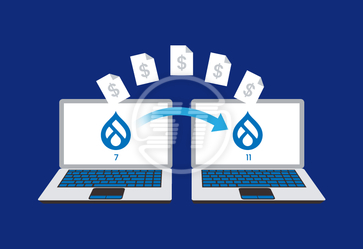Suppose you have already built a website by carefully picking up the custom theme and it is complete with media libraries, user profiles, comments, categories, and all sorts of website content. Now if you have to move to a different CMS, it may seem daunting even to the best of the breed developers.
So if Joomla CMS doesn't cater to your needs anymore, you need to think of alternatives to move to a different platform that fits your needs. Drupal is the best option we have right now. However, Joomla to Drupal migration can also be intimidating as one needs to know how to handle the custom Drupal development to accomplish the purpose successfully, or at least you should find an experienced agency who can streamline the website migration process.
In this article, let us understand what the reasons are for migrating and the different ways of approaching the process. Just dive in to know more.
Reasons to migrate from Joomla to Drupal
Both Joomla and Drupal are powerful and well-established open source Content management system development platforms. They offer similar performance and security benefits and enjoy a lot of community support. So why migrate then?
Number of Plugins
Joomla has over 7k plugins while Drupal has a whooping number of 35k plugins and modules. The general notion is fewer plugins equals fewer functionality aspects and features that can be added to your website.
Scalability
Joomla comes with a simple interface and its plugins can power up your website. But after a while, you may need to take your website to the next level which will be better with Drupal as it scales well and is lightweight. It has a lot of advanced site management options that are missing in Joomla.
Limited customization
Joomla CMS has another limitation that is website customization options.
Drupal’s Pull Factors
Drupal on the other hand is one of the most powerful CMS we have in recent times. This advanced website builder provides lucrative features. It has not only the features of a CMS platform but is a content management framework as well.
Flexibility - You can have enormous flexibility in the creation of your applications with Drupal core abilities and capabilities.
Stable Version - The latest Drupal 9.1 version has made the Drupal platform even more stable and usable. Drupal has powerful website management options like its themes, contributions, modules, etc.
Enterprise-level - Drupal comes at the top if you are looking for developing an enterprise website.
Upgrades - Drupal has over 40,000 modules that give your website a facelift with the much-needed upgrade.
To make the website management simpler and efficient for you, we present here the process of migrating from Joomla to Drupal without any data loss and no breach of security.
Things to know before migrating from Joomla to Drupal
Before we migrate from Joomla to Drupal, you need to know a few things about Drupal
- Joomla development has a single interface where users can easily select and control designs, modules, and content? For Drupal, you find all these in the control bar when you log in
- The terms used in both platforms are different. Get familiar with them to avoid any sort of confusion. Block in Drupal is referred to as a module in Joomla. Similarly, the module is Drupal as a component in Joomla, Teaser in Drupal as IntraText in Joomla, BreadCrumb in Drupal as Pathway in Joomla, and so on.
- Drupal doesn’t have a default WYSIWYG editor. Go for any third-party tool.
- Create the content first in Drupal then go for the menu settings. This saves you from manually entering the content path as you can select it from the list.
- For categorization of content in Drupal, you first need to set up the Taxonomy.
Things you can migrate from Joomla to Drupal
- Pages
- Post
- Categories
- Tags
- SEO Tags
- Comments
- Content Images
- Users
- SEO URLs
- Menu
- Menu Items
Different Methods of Migrating from Joomla to Drupal
Manual Migration Process
You will take up the migrating process of your Joomla website to Drupal without the support of any additional tools. This, of course, is a tedious process but the only silver lining here is that you can make sure that all the content is transferred without fail. Even if any content or categories are not supported on Drupal, this approach is the best to find a workaround.
- Connecting the Database - Start with connecting to the Joomla DB from the Drupal host. Make sure both have the same engine driver either MySQL or PostgreSQL
- Migrate Content - Transfer the Joomla sections to the relevant taxonomy vocabulary in Drupal. You can then transfer the content from Joomla to Drupal.
- Migrating IntroText - You need to copy Joomla IntroText to Drupal Teaser. Copy the Introtext+Maintext to drupal.node_revisions:body to convert Maintext to the body.
- Migrating Forum - Drupal has an in-built forum that can be enabled using the admin module. You can transfer the Parent-Forum category from Joomla to Drupal.
Edit your Drupal themes as per your requirements instead of tweaking the Joomla templates. Also, you can go for a third-party editor or manually type in HTML in proper format as Drupal doesn’t have a WYSIWYG editor.
Automated Migration Process
You can for a site migration service like CMS2CMS that is specialized in the website migration process from one CMS to another. You don’t need to have any technical skills as it ensures smooth content migration. You can simply follow the below steps to proceed with the full migration.
- You can create an account in the CMS2CMS web migration process.
- Specify the Source or Current CMS as Joomla and Target as Drupal Content Management System. Also, provide the website URLs.
- Download the connector extension and install it
- You can then download the connection bridge that establishes the connection between the websites.
- You can select the entities to be migrated and additional options required.
- Check the demo migration and if everything seems fine, make your final decision of launching the Joomla to Drupal migration.
Migration Through Drupal Modules
Drupal has several migration modules that support site-wide migration preserving the content and appearance. Some of the essential modules required for this purpose are -
- Joomla to Drupal Module
- Node Export Module
- Migrate Module
- Feeds Module
Migration Through WordPress
Does that feel like a roundabout way of doing things? Yes, it does look so when you are migrating through another CMS. But turns out it is often the convenient and efficient way as WordPress has a better way of importing from Joomla and then exporting to Drupal. You can use plugins like “FG Joomla to WordPress” for importing the Joomla website to WordPress.
You can enter the Joomla website details as well as DB detail and click on “Run Importer”. As some aspects of your website may not be supported by the free plugin, choose a premium plugin that supports well. Once you have the setup on the WordPress platform, verify if you got all the content imported and export it via XML. Move to your Drupal site and install the below Drupal modules that complement the Drupal Core import module -
- CTools
- Migrate Plus
- Migrate Tools
- WordPress Migrate
Import the XML file now and verify your content on the Drupal website.
Conclusion
That’s about it! You need to be mindful of complex your Joomla website is and some of the content on it cannot be supported by Drupal and its plugins. So, make sure you check the compatibility and if in such cases, choose the appropriate approach like manual or go for an experienced agency who can help you out with the migration process.
Skynet Technologies has 2 decades of technical experience in web development services. We have a team of expert Drupal Developers who is adept at handling any challenges that come along with Drupal and its upgrades. We have a skilled team who can help you with migration services and also provide you the post-migration support if required.


